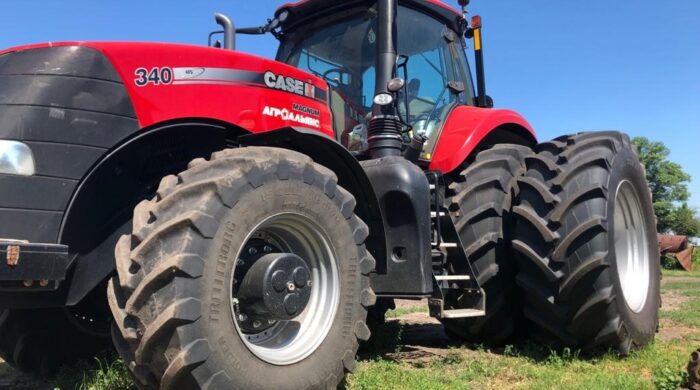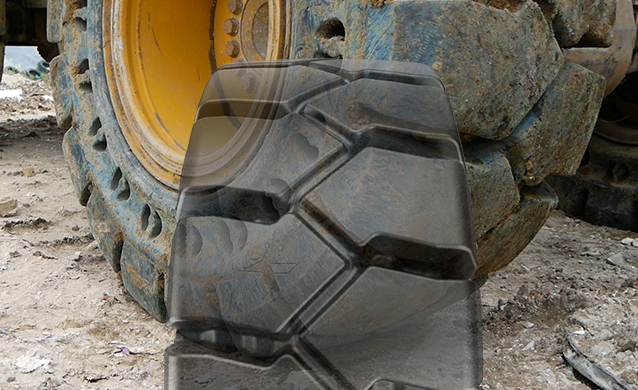How are OTR tires manufactured and what are tire compounds?
Listen to “The Science behind OTR Tires” featuring Director of Engineering of Maxam Tire North America, Matt Fagan.
With tires being a pivotal role in how well your off-the-road equipment perform and how much it can carry, it’s no wonder customers frequently asked details about how these tires are manufactured, why certain tread patterns matter, why tire compounds matter and why some tires have a specific design. In this article, we reveal some of the science inside today’s OTR tires and how some engineering components, such as tire compounds, play an important role in operating conditions and machine performance.
What is a tire compound and why does it matter to OTR tires?
OTR machines work in harsh conditions with challenging terrains, therefore, OTR tires have specific rubber compounds that make them durable to meet the tough environments the machines face.
A tire compound is essentially a vulcanized rubber recipe that is composed of multiple materials. After natural rubber is harvested from latex rubber trees, it goes through a complex process to make it usable in manufacturing a tire. It all depends on the base rubbers for a particular tire, but natural rubber could be used for applications that require a lot of heat resistance.
In other cases, if you’re looking for a more cut-resistant or wear-resistant type of tire based on your application, manufacturers start incorporating some synthetic rubbers such as SBR or BR, derived from petroleum products. This works by mixing that raw rubber with a curing package, providing the vulcanizing property when the rubber’s been cured. In addition, additive materials are then introduced, such as carbon black or silica, to further reinforce that rubber and provide more strength.
Essentially, tire compound(s) help determine tire performance and the type of jobs the application operates in.
How do different compounds affect tire performance for different applications and operating conditions?
In construction, due to its abusive environment, equipment users need something more cut and wear resistant. Whereas in mining, where it’s a case-by-case scenario with each mine site unique to its needs and location. For example, a mine site with long hauls requires tires that are most susceptible to heat buildup as machines can travel up to 20 miles in a cycle. Or a different mine site may not have roads that are as well-maintained and require tires that are more cut resistant.
Outside of OTR and construction industry, agricultural is a very demanding application as well. With its high torque putting stress on the tire beads, it requires tires that are more puncture resistant or stub proof due to sharp objects on the field. In addition, agricultural tires need to last longer than other tires as they are prone to zone cracking due to long exposure on the dirt and soft ground applications. With such field requirements, our standard agricultural tire needs to have anti-ozone additive to help prevent weather cracking from exposure to UV light and ozone in the field.
How are OTR tire compounds tested and developed?
Depending on the application and need, sometimes manufacturers tweak current compound recipes by having different carbon-black materials, silica, or other curing packages to optimize the curing times for that particular vulcanization. Based on small tweaks, the improvement will be tested in different ways, such as lab, machine test or field test, ensuring its success rate.
Every manufacturer has its way of developing their own rubber recipe. At Maxam Tire, we have a lab, EVE, that is responsible for global rubber compound research and development. One of our large initiatives in the past few years has been developing and implementing the Liquid Phase Mixing technology. Instead of dry mixing the rubber compounds together, this blending process seamlessly mixes the compounds in a liquid phase matter, providing better dispersion of the ingredients to reinforce the properties of the compounds.
One of the advantages of this new technology is enabling multiple rubber compounds to be enhanced simultaneously. For example, the traditional dry mixing technique usually disables the simultaneous ability to have both heat and cut resistance, because there’s always a tradeoff. For one to have a tire with a higher heat resistance, they usually must lose some cut resistance and vice versa. With the Liquid Phase Mixing technology, we’re able to formulate the enhancement of both heat and cut resistance of the material without any tradeoff.
How many OTR tire compounds can a tire have?
Tires can have up to fifteen different compounds. For example, solid tires for forklift may only contain one type of tire compound, while an OTR tire can have more than ten different compounds depending on the size of the tire and the type of job it’s being used in. This applies to not just the tread compound of the tire, but also under tread, belt, shoulder, and bead compounds. There’re different areas of a tire that require different compounds for the unique purpose that material is being used for.
In summary, rubber compounds used in OTR tires are a complex matter but play a vital role in determining tires’ performance and ultimately your machine’s performance. We always recommend operations to consult your local dealers and contact us should you need guidance on what tire to select based on your application and job requirements.
If you’re interested to learn more about OTR tire compounds, listen to our podcast featured on OEM Off-Highway, where our Director of Engineering, Matt Fagan, shares knowledge on how tires are built and the science behind tire compound.



